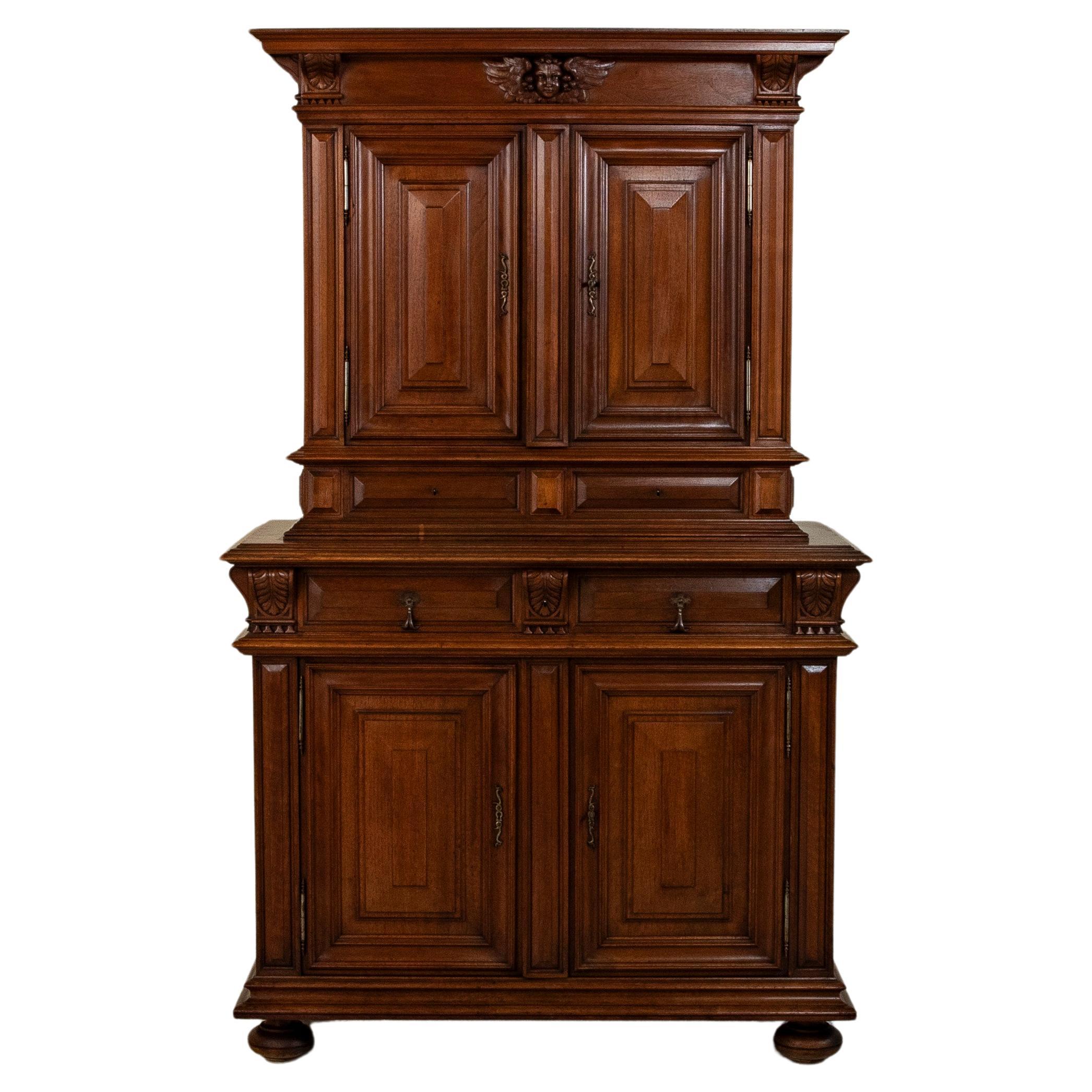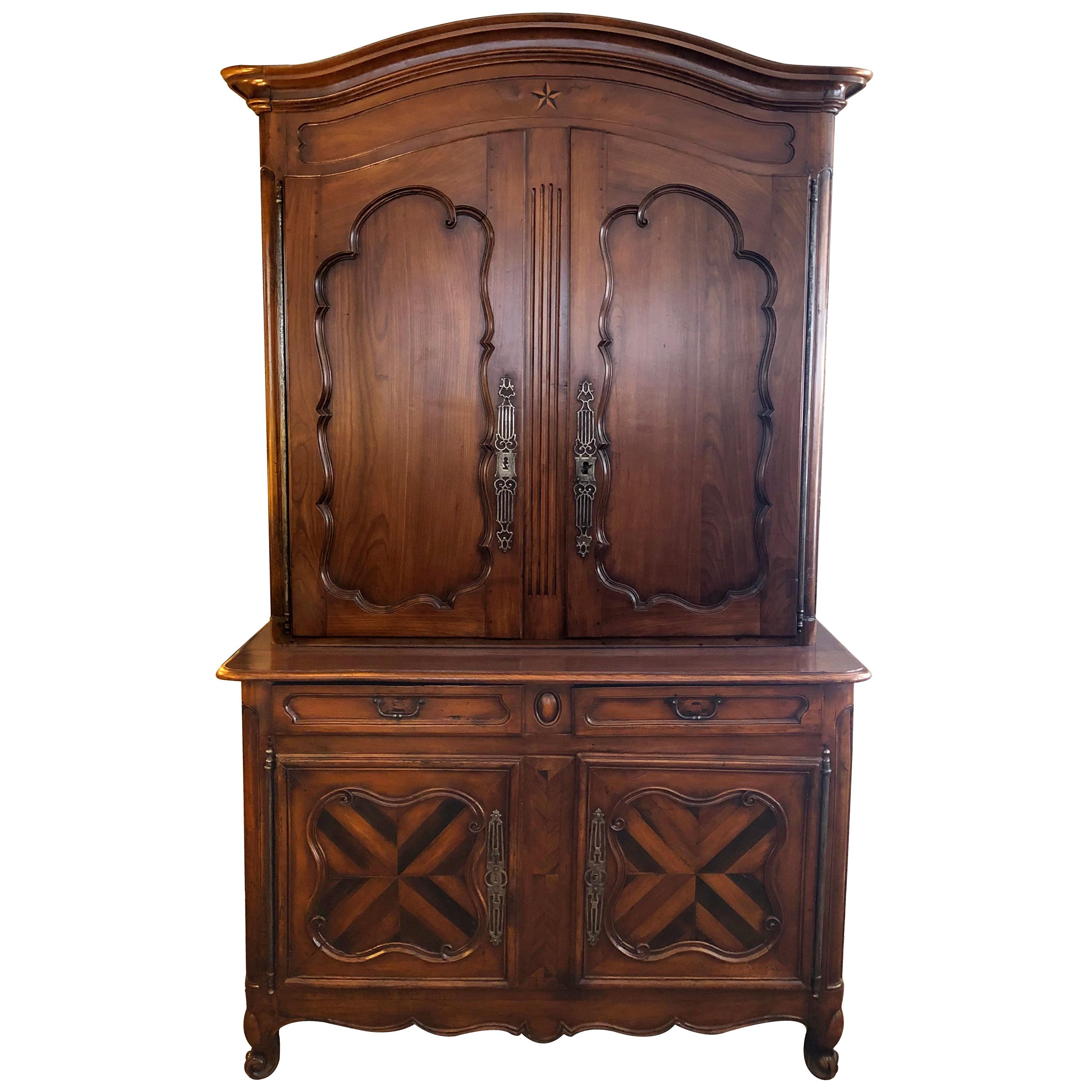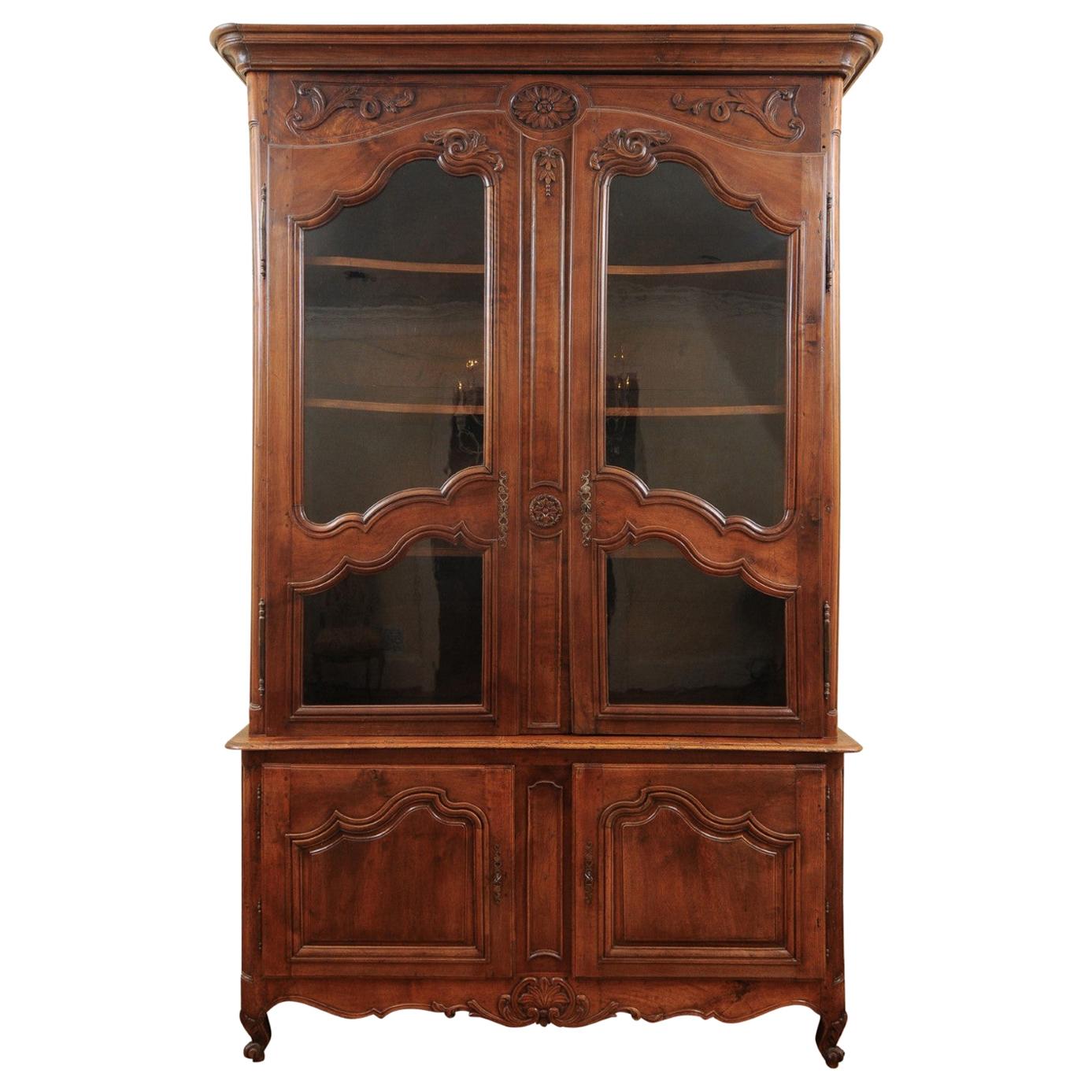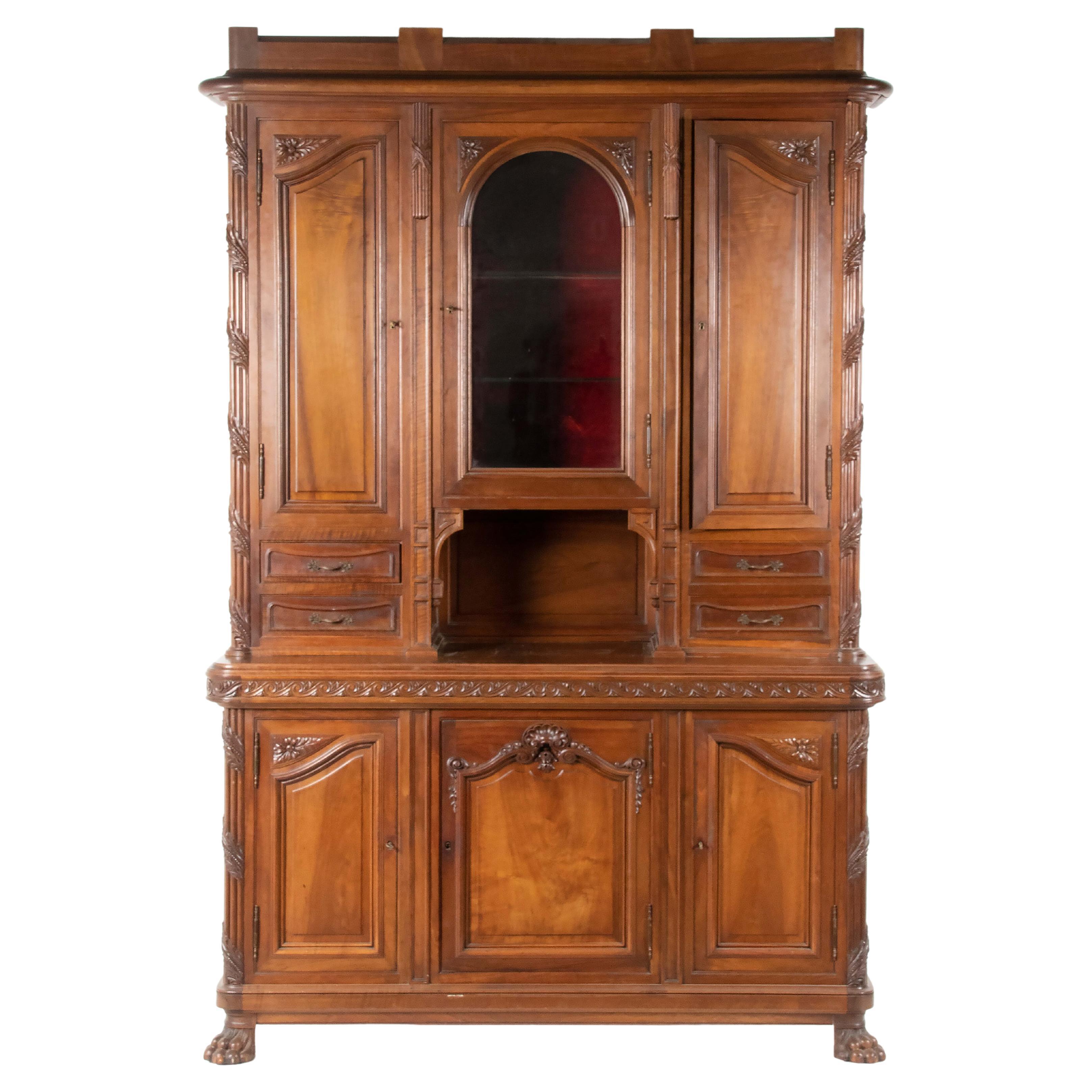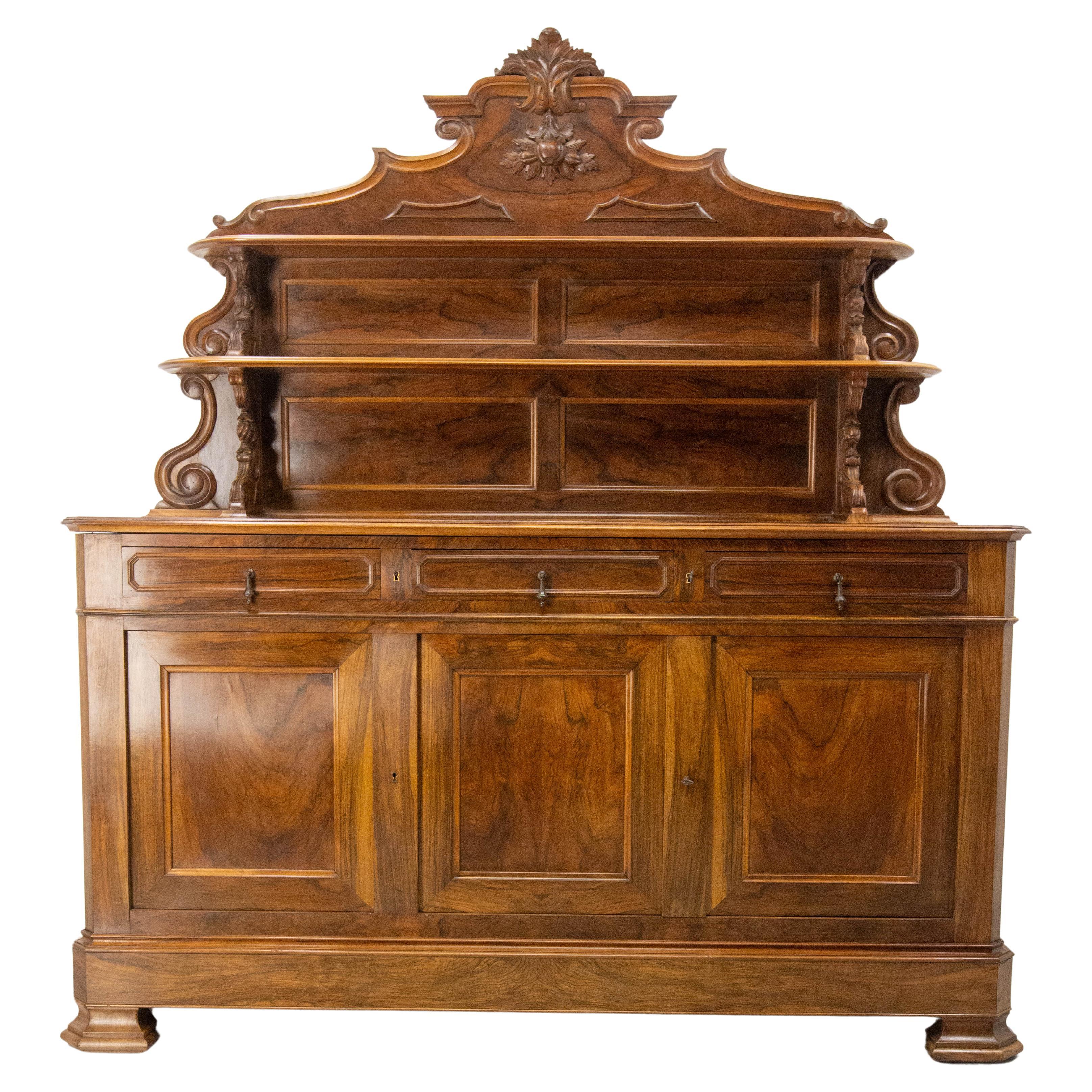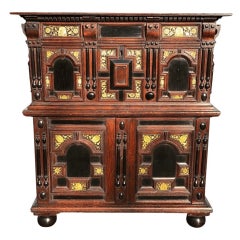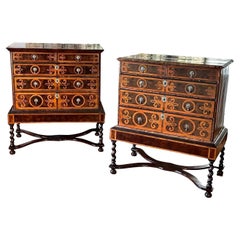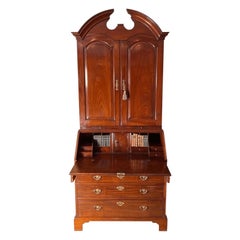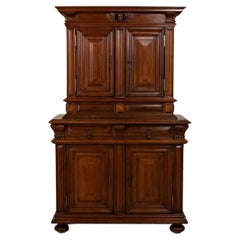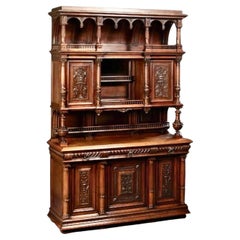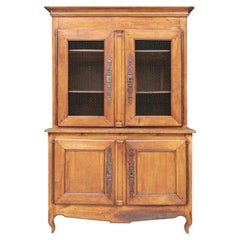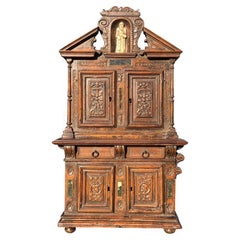
Extremely Rare French Henri II Carved Walnut Miniature Meuble à Deux Corps
View Similar Items
Video Loading
Want more images or videos?
Request additional images or videos from the seller
1 of 10
Extremely Rare French Henri II Carved Walnut Miniature Meuble à Deux Corps
About the Item
- Dimensions:Height: 15.36 in (39 cm)Width: 9.06 in (23 cm)Depth: 4.34 in (11 cm)
- Materials and Techniques:
- Place of Origin:
- Period:
- Date of Manufacture:1519-1559
- Condition:Wear consistent with age and use. Some minor losses.
- Seller Location:Lymington, GB
- Reference Number:Seller: BHA 11271stDibs: LU4081125696482
About the Seller
5.0
Vetted Seller
These experienced sellers undergo a comprehensive evaluation by our team of in-house experts.
Established in 1957
1stDibs seller since 2018
33 sales on 1stDibs
Typical response time: 8 hours
More From This SellerView All
- Rare Charles II Period ChestLocated in Lymington, GBThis exceptional 17th-century chest / cabinet has one long working drawer, and one deep drawer, with cupboards retaining internal shelving below. All faced with elaborate, mitred, geometric mouldings, applied split balusters, carved corbels, roundels and engraved mother-of-pearl and bone panels. Some panels apparently in ebony. Dentil cornice to the frieze. Bun feet replaced following the original design. Great colour, old surfaces and overall condition is excellent. It conveniently divides into two sections. Circa 1660. Provenance: Lisgoole Abbey, N. Ireland. Literature: R. W. Symonds, 'The Present State of Old English Furniture', Duckworth, London (1921) fig. 7, dated 1673. Vis a very similar 17th c chest. Percy Macquoid RI, 'A History Of English Furniture - The Age Of Oak', Lawrence & Bullen, London (1904-08) p. 76, figs. 140 & 141, for two similar chests of ''well considered proportions and details’’. Figs. 203 - 210 exhibit further similarities in design, and MacQuoid states that “the fashion for these chests must have been great, as many varieties of them… followed rapidly upon one another in date” [sic] pp. 97-99. Viz p. 77, fig. 141 (Oak chest with drawers). The top opens in a long drawer, below is a very deep drawer, panelled in strong projection, the bevels of which are of so-called zebra or snake-wood. The lower portion of the chest, opening in two doors... [sic]. Nb. The chest illustrated in Macquoid is of oak, but in 1680 it was probably to match some other furniture, painted black and lacquered in what was then termed ''The Indian Taste'', so very fashionable for a time. The bone and pearl inlay is very cleverly imitated in the lacquer-work. Ralph Edwards CBE FSA, 'The Shorter Dictionary of English Furniture', Hamlyn, London (Fourth Impression 1972) “The next stage in the evolution (of the chest) was delayed until c. 1650, when a hybrid form, half cabinet and half chest...Category
Antique Mid-17th Century Charles II Commodes and Chests of Drawers
MaterialsOak, Bone
$11,241 - Fine Rare Pair 17th Century Oyster Walnut Chests on StandsLocated in Lymington, GBA fine, and rare, very closely-matched pair of late-17th century oyster walnut chests on stands. English, Charles II period, ca 1685. Both with f...Category
Antique 17th Century English Charles II Commodes and Chests of Drawers
MaterialsWalnut
- George II Mahogany Bureau Cabinet BookcaseLocated in Lymington, GBAn 18th-century mahogany bureau cabinet of impressive architectural form and lovely rich color. George II period, circa 1740. The top surmounted by a bold architectural pediment and centered by a brass finial. The two arched panel doors reveal three adjustable shelves which have candle slides below them. Furthermore, the bureau section is fitted with a stepped interior. This has two secret compartments, drawers and pigeon holes, and the fall is conventionally supported on two lopers. Lined in the best quality English oak. The blind doors of this Georgian cabinet have well-figured mahogany panels of very good rich color which reflect beautifully in the candle light. The chamfered and arched doors display a further level of sophistication and quality. The beautifully-drawn arched pediment is in perfect proportion with the rest of the cabinet / bookcase. In excellent condition overall. Architectural furniture designs on the continent commenced with the arrival of the Renaissance, and they have their origins in Roman and Greek architecture. Nb. Bureau bookcases display books, china or silver behind glazed doors, but are described more accurately as bureau cabinets when they are fitted with blind doors. We often refer to antique bookcases / cabinets as ''secretary desks'' in the US. Information on pediments: 'Illustrated Dictionary...Category
Antique 1740s English George II Cabinets
MaterialsGlass, Mahogany
- George II Mahogany Bureau Cabinet BookcaseLocated in Lymington, GBA very impressive mahogany bureau cabinet / bookcase / secretary*, with secret compartments. In the manner of Giles Grendey (1693-1780). In mahogany and parcel gilt. Mid-18th century, George II period. This English bureau cabinet displays fine, deep, rich colour and superb surface patination throughout. The top section with a broken-arch pediment and dentil cornice. The frieze well carved with Gothic arcaded blind fretwork. Centred by a later urn-shaped finial. The cabinet with two carved parcel-gilt gesso bordered ogee shaped doors. Old but apparently later mirror plates enclosing a fitted interior with eight drawers and adjustable shelves. The cleated fall, with its original lock, now fitted with a wine red, gilt-tooled writing surface revealing an exceptionally high-quality arrangement of canopied drawers and pigeon holes. The interior is centred by an arched, architectural over door...Category
Antique 18th Century English George II Bookcases
MaterialsMahogany
- Fine George I Burr Walnut Secretaire CabinetLocated in Lymington, GBA fine English George I-period burr (burl) walnut secretaire cabinet. Early-18th century, ca 1720. The top section separates from the base and opens to reveal numerous fitted drawers, behind doors with original bevelled arched mirror plates. The base contains a fall-front fitted secretaire with small drawers, two of which have secret drawers. Engraved mounts are contemporary if not original. All locks and cross-grained mouldings are original. Beautiful colour throughout with superb matched burr veneers within herringbone lines. Bun feet are original. Lined throughout in best quality English oak. The well-patinated green, gilt-tooled liner in the writing surface appears original. Very much in the style of John Old & William Ody. One of the most original early-18th century pieces of English walnut cabinet...Category
Antique 18th Century English George I Cabinets
MaterialsWalnut
- Rare Chinese Kangxi Polychrome Coromandel Lacquer CasketLocated in Lymington, GBA rare Chinese polychrome Coromandel or ‘Bantam Ware’ lacquer casket or table cabinet, Kangxi period (1661-1722). Circa 1700. This fine small Chinese export lacquer fitted casket is decorated overall with polychrome incised decoration. Opening with two doors revealing a red interior with fitted drawers and a hinged rising top. In superb, almost entirely original condition, retaining its vivid colours and fine details with courtiers in a pavilion and on horseback amidst foliage and formal palace gardens. The small bun-type feet are historical replacements. Interestingly bearing an antique-script inventory #25 and A I on the base. Nb. Bantamwork or Coromandel lacquer, not to be confused with ‘japanning’, is the term applied to decoration that is cut into a layer of gesso and then lacquered in colours. Much of the lacquer was transhipped from China through Coromandel in India, or the Dutch colony Batavia, Java. References: Coromandel lacquer or ‘Bantamwork’, with its characteristic incised decoration, was made in Henan province in northern China from the latter part of the Ming dynasty and exported to Europe from the end of the 17th century through the East India Company’s and VOC trading posts on the Coromandel coast of India. The technique consisted in overlaying a base of wood with a series of increasingly fine white clays and fibrous grasses. Over this surface, lacquer was applied and polished before the design was incised and the hollowed out portions filled with colour and gilt and finished with a clear lacquer to protect it. Although John Stalker and George Parker used the term ‘Bantamwork’, the contemporary layman usually called it ‘cutt-work’, ‘cutt Japan’ or ‘hollow burnt Japan’. Stalker and Parker discuss two types of ‘Bantam-work’ – flat and incised – in their Treatise on Japanning and Varnishing of 1688, noting that it ‘was done in colorus mix’t with a gum water’. They also considered that it was ‘almost obsolete, and out of fashion, out of use and neglected….’ although admitted that ‘it was very pretty, and some are more fond of it, and prefer it to the other…’. This casket/ table cabinet now on offer is related to one formerly with Malletts and illustrated in A. Bowett, 'English Furniture 1660-1714: From Charles II to Queen Anne', Woodbridge, 2002, p. 150, plates 5:9. A much larger closely-related Bantam work coffer with rising lid was offered in the ‘Asian Art in Cologne’ sale lot 114 on 11th December 2021. Estimated @ £60,000 – £79,000. Mme de Pompadour, mistress to King Louis XV from 1745 to 1751, was an avid collector and admirer of Chinese Coromandel or Bantam work and was probably largely responsible for the very high prices recorded for such pieces, sometimes 10 times or more the price of ordinary furniture of equivalent quality. A Coromandel cabinet...Category
Antique 18th Century Chinese Cabinets
MaterialsLacquer
You May Also Like
- Late 19th Century French Henri II Style Hand Carved Walnut Buffet Deux CorpsLocated in Fayetteville, ARThis late nineteenth century French Henri II style walnut buffet deux corps features a hand carved cherub with wings at the crown. With solid paneled sides, the piece is divided into...Category
Antique Late 19th Century French Renaissance Cabinets
MaterialsWalnut
- French Henri II Style Hand Carved Walnut Buffet a Deux Corps c. 1880Located in New Orleans, LAFrench Henri II Style Carved Walnut Buffet a Deux Corps, c. 1880, the stepped crown over an arched breakfront top with spindle galleries below, on a ...Category
Antique 1880s French Belle Époque Sideboards
MaterialsBronze
$2,800 Sale Price20% Off - Antique Country French Walnut Buffet a Deux CorpsLocated in Bridgeport, CTThe tall two- part cabinet with carved cornice over the top with double grille doors with fine iron mount, two shelves inside. The lower cabinet with double doors opening to one shel...Category
Antique 19th Century French French Provincial Buffets
MaterialsWalnut
- French Renaissance Henry II Late 16th Century Walnut Deux-Corps CabinetLocated in Troy, NYFrench Henry II Deux-Corps cabinet, in two parts. Of linear design and interesting, unusual proportions, the top part with two-doors over two drawers, bottom with two larger drawers ...Category
Antique 16th Century French Renaissance Cabinets
MaterialsWalnut
- Impressive French Provincial Walnut Buffet-a-Deux-Corps/CabinetLocated in San Francisco, CAIn two pieces, the dramatic arching crest above a two-door cabinet resting on a base fitted with two short drawers over 2 doors.Category
Antique Mid-18th Century French Louis XV Cabinets
MaterialsWalnut
- French 1790s Walnut Buffet à Deux-Corps with Glass Doors and Carved MotifsLocated in Atlanta, GAA French walnut buffet à deux-corps from the late 18th century, with glass doors and carved motifs. Created in France at the end of Louis XVI reign, this walnut buffet à deux-corps f...Category
Antique Late 18th Century French Cabinets
MaterialsGlass, Walnut
$7,960 Sale Price20% Off
